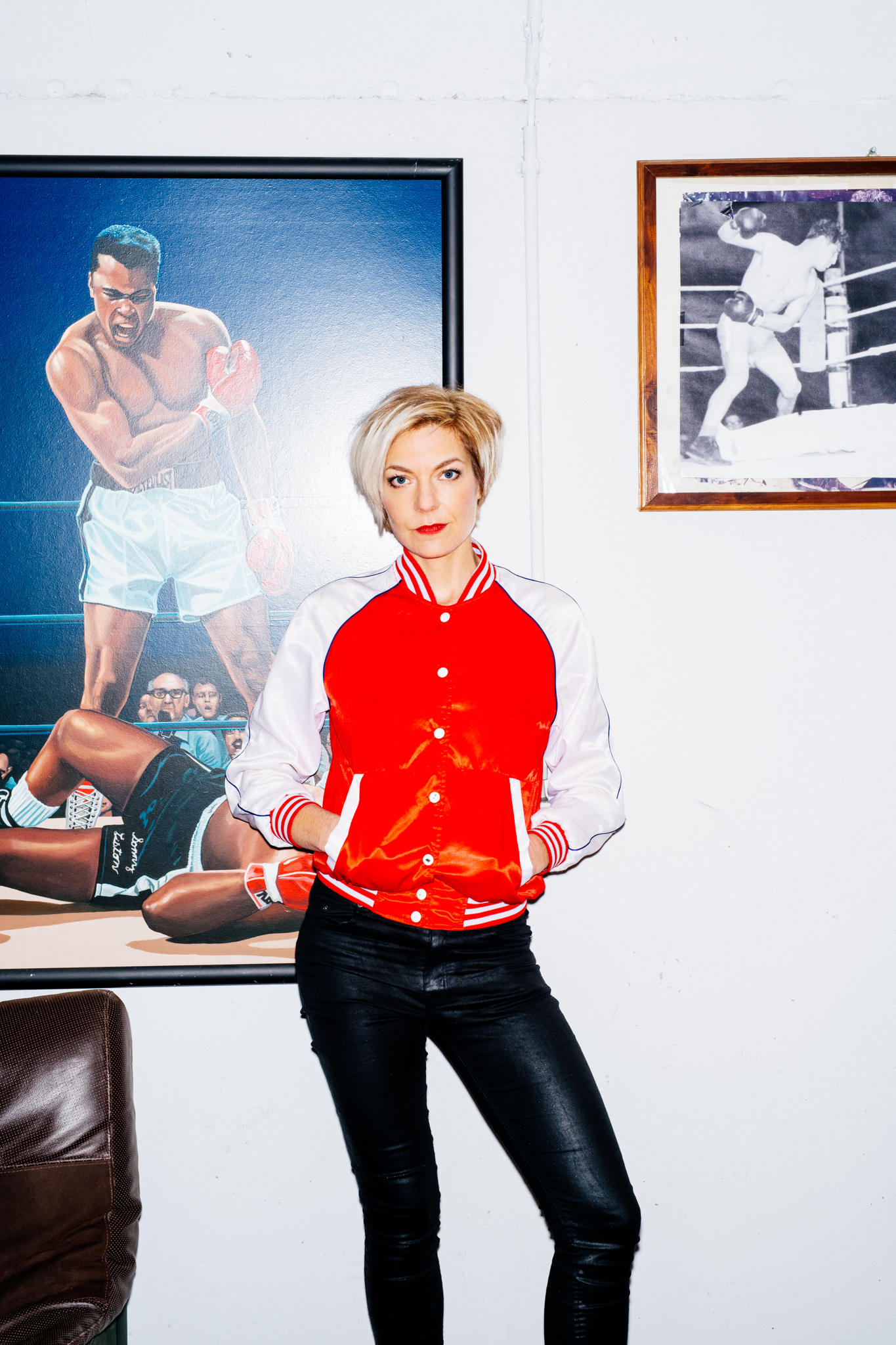 Melencolia
Melencolia
Brigitta Muntendorf, Ensemble Modern
19 - 20 juni 2024
Muziekgebouw - Grote zaal
Melancholy
‘Unlike grief,’ Muntendorf says, ‘with melancholy you don’t know what you lost. You can grieve something very specific and go through different phases, but what characterises melancholy is the feeling of being completely lost. This sense of detachment was the germ from which I created Melencolia.’ The idea pervades the piece. Muntendorf creates divides in her material on different levels. The flutist, for instance, will scream lyrics from love songs onstage, while his diction extravagantly conflicts with the clichéd words.
There are also three projection screens set up beside two green screens. As a consequence, there’s a divide between how something is made and what the result looks like. By showing both, Muntendorf highlights the space in between. Melancholy, the sense of inexplicable and irreparable loss, unfolds within this space and spreads through a range of virtual worlds. From Robert Burton’s The Anatomy of Melancholy to Zinédine Zidane’s headbutt, and from a necropolis to the Norns, fate goddesses from Norse mythology.
Copperplate engraving
Melencolia presents a multitude of incalculable worlds. In no time, a place emerges where you feel lost. The stage is best compared to Albrecht Dürercopper’s copperplate engraving Melencolia I (1514), which inspired the piece. The engraving shows a winged woman staring ahead, her head resting in her hand. There’s a lot to see all around her: an hourglass, wood plane, dog, claw hammer, saw, scale, some kind of rainbow, a magic square, a large polyhedron, a ladder, a putto and much more.
Particularly noteworthy with respect to the performance are specific objects from Dürer’s engraving that return in the stage setting. There’s a dog on the floor when you enter, and several musicians are wearing angel wings. The light in the background is there as well in the view of the musicians: ‘This apocalypse with Dürer,’ Muntendorf says. ‘You can also hear it in the percussionists’ shimmering cymbals.’ Thus, the stage echoes the melancholy depicted in the copperplate engraving, almost like a living puppet theatre.
Absurd recognition
The abundance of information with which Muntendorf confronts her audience not only echoes Dürer’s copperplate engraving, but also the digital world’s overload, which increasingly seeps into everyday reality. To such an extent that finding silence is a rare occurrence. In the same vein, film footage is stacked on top of the music while all kinds of things occur onstage. There’s rarely a moment’s rest. Different things vie for your attention all at once.
While a subject like melancholy might seem to call for contemplative music, Muntendorf offers no musical solace with inward-looking neo-spirituality or harmoniously exalted kitsch. If the music isn’t too frenetic, several things can be heard at once, sometimes including contrasting music styles. Contemplative moments emerge as a result of her pushing everything to the extreme: it seems calm can only be found in exhaustion here.
Nevertheless, Melencolia feels like a coherent whole, as Muntendorf strives for a certain nearness, or intimacy, in her depiction of melancholy. Despite the opposites she deliberately plays off against each other, their unavoidable absurdity is also a connecting factor. The less congruent the world appears to us, the more we recognise ourselves in its absurdity.
Between intimacy and collectivity
Muntendorf emphasises melancholy by making personal experiences, her own and those of Ensemble Modern’s musicians, an integral part of the piece. For instance, the Japanese violinist will sing a karaoke song, for which she had singing lessons, because of the cultural connotations between melancholy and karaoke.
Muntendorf already wrote the scene “Daisy Daisy” some time ago for Ensemble Modern’s forty-year anniversary, based on a folksong about parting ways that her parents used to sing. ‘I wanted to include that. It’s a melancholy moment, as the ensemble is looking back on a long history. In a few years, all the players who were there from the start will have been replaced because they have retired.’ With this, she expresses the melancholy of parting ways, and how this might translate into music.
At the same time, the piece also gives rise to collective moments. Muntendorf layers several recordings of You’ll Never Walk Alone on top of another, sung by chanting football supporters, then contrasts this with a pastiche of a baroque violin duet against background images of Zidane’s headbutt followed by a game of Pong, one of the first videogames. The contest between two competing violinists and two football squads is at the same time highlighted as that sense of belonging when playing a party game or the football supporters’ devotion that borders on the religious.
‘We need more room for melancholy,’ Muntendorf says, ‘in order to calm down and accept that we can’t understand everything. Melancholy calls for contemplation. We need to see it as a creative moment.’ Dürer’s big black polyhedron is in the middle of the stage, its function, as in the engraving, not entirely evident. It has often been interpreted as a symbol of the insolvability of human existence; a lump of materialised melancholy. The object is moved back and forth, almost as a penalty, a great burden that must be shouldered. ‘But if anything,’ Muntendorf says, ‘melancholy’s insolvability invites reflection. It’s not a troublesome object, but really something to celebrate.’
This interview took place online in March 2024.